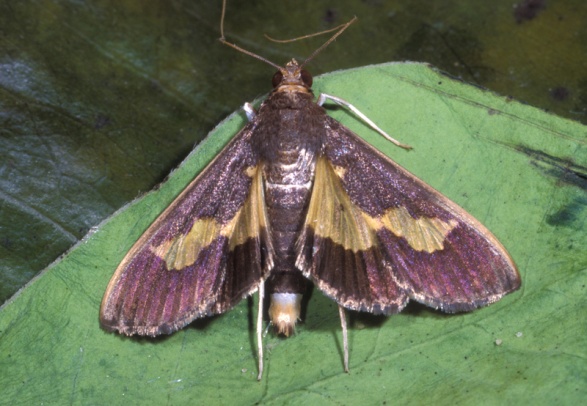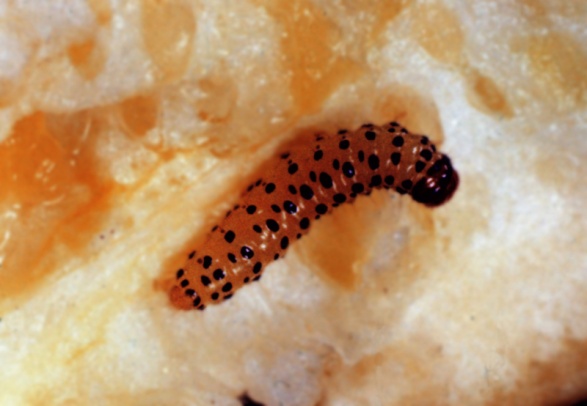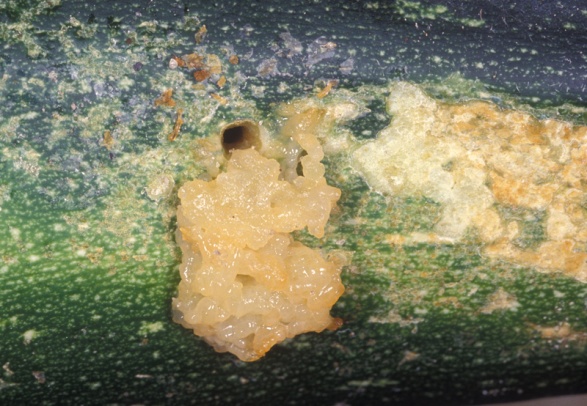
Pickleworm
Diaphania nitidalis (Stoll)
(Insecta: Lepidoptera: Pyralidae)
Adult moths have a 3 cm wingspan, brown bodies, and beige, hairy tufts at the tip of the abdomen. Wings are dark brown with a semitransparent yellow center that reflects an iridescent purple. The minute eggs (0.8 mm long) are white when laid and then turn yellow. Larvae grow in length from 1.6 mm to 15 mm. Young larvae are white or pale green with a characteristic pattern of dark spots. Mature larvae lack these spots and can vary in color.
Completion of the life cycle takes about 30 days. Eggs are deposited in clusters of two to seven eggs on buds, flowers or growing plant tips. Hatching larvae undergo five instars during 14 days. Pupation occurs within leaf folds, and adults emerge after about nine days.
This tropical insect overwinters in South Florida and possibly South Texas. In the summer it disperses north to the Carolinas, and occasionally as far as Michigan and Connecticut.
The host range of the pickleworm is restricted to both wild and cultivated cucurbit species such as creeping cucumber, pumpkin, summer squash, and winter squash.
Images
To
save the Web-optimized images shown below to your hard drive:
PC users: right click to "Save Picture (or Image) As..."
Mac users: click and drag to your desktop.
Adult moth of pickleworm, Diaphania nitidalis (Stoll)
(Photographer: Paul Choate, University of Florida)

Young larva of pickleworm, Diaphania nitidalis (Stoll)
(Photographer: Clemson University - USDA Cooperative Extension Slide Series, Bugwood.org, with permission 2013-09-12)

Damage and frass of pickleworm, Diaphania nitidalis (Stoll)
(Photographer: Lyle Buss, University of Florida)